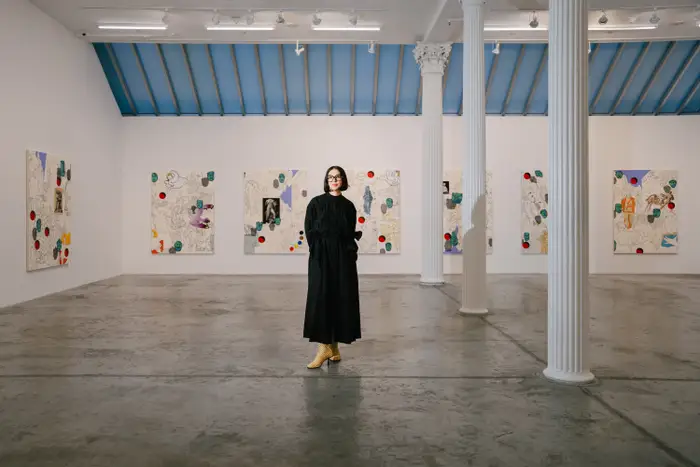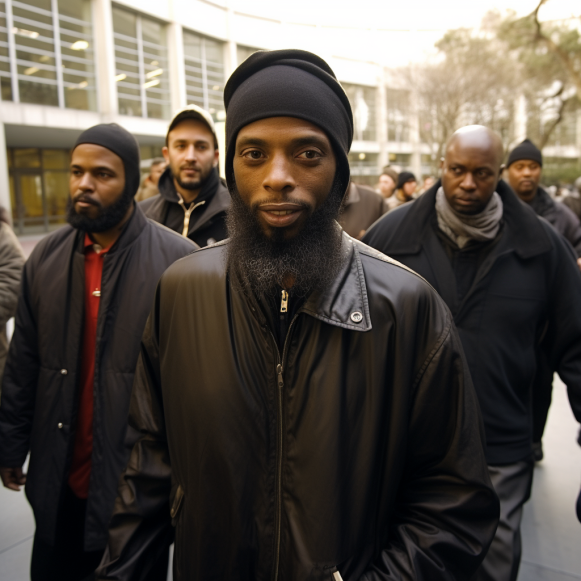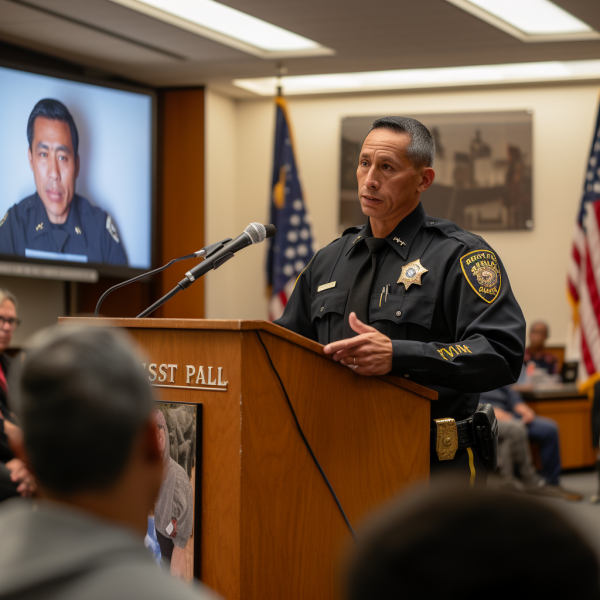Directing Art Basel Miami Beach is a massive undertaking. Bridget Finn, a veteran in the art world, was up to the task.

Bridget Finn, the director of Art Basel Miami Beach.
Inside the contemporary-art gallery Bortolami, there’s a stillness unperturbed by the bustling sounds of its Manhattan neighborhood. It’s especially peaceful on a sunny Tuesday afternoon when Bridget Finn — a veteran gallerist, archivist, and art dealer — arrives for our editorial shoot.
She warmly greets me and the photographer, Paola Chapdelaine, before changing into her photo-shoot attire: a black button-down dress adorned with bows on either side, yellow mesh boots, and statement eyeglasses. I feel compelled to compliment her chic ensemble, and she responds with a gentle smile and a soft-spoken “thank you.”
As Finn poses against the backdrop of the gallery’s exhibits, she looks right at home. After all, she’s worked in the art world for over 20 years, climbing the ranks and building rapport at galleries around the world, including Bortolami. The latest feather in her cap is helming this year’s Art Basel Miami Beach show as its new director. Her directorship started in September 2023, and she’s spent the past year planning the 2024 art fair, set to commence publicly on Friday.

Finn posed in Bortolami’s space showcasing Caitlin Keogh’s Procession, 2024. © Caitlin Keogh (Courtesy of the artist and Bortolami, NY.)
“Thinking about the show as a platform and how to develop structures of support for peers was incredibly important to me,” Finn told me on a video call a week before we met at Bortolami, one of 286 galleries presenting works at Art Basel. “I have always been drawn to art as a way of forging cross-culture dialogue, and I think that art fairs are a huge player in this realm.”
Shepherding an event as massive and multicultural as Art Basel is a tall order. Finn said she tackled it by taking “the role of a listener” and meeting with several stakeholders, including artists, “connoisseur collectors,” and gallerists that are interested in showcasing their exhibitions. The objective, she said, is to accommodate everyone’s desired experience and “have the best show possible.”
Admittedly, Finn added, trying to meet everyone’s needs was a challenge.
For instance, when her team members mapped out the floor plan at the Miami Beach Convention Center, a 1.4 million-square-foot venue, they had to consider multiple factors: how to physically plot booths and exhibitions, how to make the space easy to navigate for attendees, and how to sensibly connect different sectors in the massive building. If they made a change that affected a gallery’s placement on the show floor, they had to ensure the gallery was aware and aligned with the decision.
“With everything in the art world, there was a balance of flexibility — figuring out where we can be flexible and then what is an absolute must,” Finn said. “It was a learning curve.”
This year, 34 galleries will make their Art Basel Miami Beach debut, the most first-time participants at the fair in over 15 years. They’re “international in scope,” coming from different regions in the Americas, Asia, and Europe, Finn said.
Exhibitors are chosen by Art Basel’s selection committee, which sifts through hundreds of proposals and applications from galleries. It’s a “very layered and involved ” process, Finn said, but essentially, they’re looking for submissions that are “a cut above the rest.”
“Of course, there is some subjectivity to that, and that is up to them to define,” she added.
Finn said she hoped the galleries would bring “a dynamic energy” that attendees can feel when they step into the venue.
“I would be so bold as to say that Art Basel Miami Beach is often the platform where new trends in art appear. It’s where they get pushed even further,” she said. She added that the slate of emerging artists, part of the fair’s Positions sector, would help create a “feeling of freshness.”
Finn said she’s excited to see all the Positions works, notably exhibitions from three artists and a group: Agosto Machado, a New York artist and activist of Chinese, Spanish, and Filipino descent; Terrence Musekiwa, a Zimbabwean sculpture and installation artist; Diego Vega Solorza, a Mexican dancer and choreographer; and MAHKU, a Brazilian artist collective that uses its proceeds to buy, preserve, and protect land around its native village in the Amazon region.

Finn is excited for the Positions work at the fair.
Artnet’s “Intelligence Report” said the art industry saw a dip in fine-art auction sales in 2023 — a snapshot of a larger trend of global art sales declining last year.
But Finn said she’s seen signs of a bounce back throughout this year.
“Things are appearing to go in the right direction in terms of market stability and sales,” she said. “Galleries have started thinking very strategically about how to define themselves and their program and the artists they work with in an art-fair context.”
When done right, this tactical approach can help support the enduring role of artists, Finn told me.
“Artists have led the way through difficult times of transition in society throughout history. This is nothing new,” she said. “They have this ability to bring people together, start a conversation in a way that may be challenging in other arenas, and impact change in society. I believe that so fully.”





